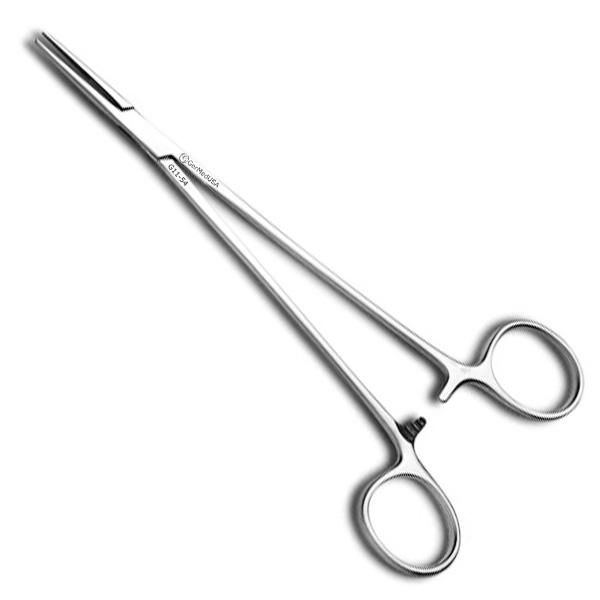Several remarkable surgical instruments have been helping surgeons to complete different surgical procedures in an efficient manner. These instruments are precise and enable easy and trouble-free handling of anatomical structures like organs, tissues, bones, teeth, and non-biological objects as well. During the surgical procedures, careful maneuvering of surgical equipment is important to not damage the adjacent skin of the wounded site or the operational field. Among these surgical instruments, dressing forceps are prominent. As their name shows, these forceps work on wounds by applying wound bandages properly. Such forceps can also take off the adhesive dressing when required. There is a wide range of applications of these forceps, which is interesting to know.
Structure Of The Instrument
A surgeon has to be prudent while implementing this surgical equipment. A slight mishandling during the surgical task can complicate it more both for the patient and the surgeon. Due to this fact, it is suggested that the operator should be able to have the basic knowledge of the technique of application of the surgical tool he is going to use for safety purposes.
These forceps have different subcategories available for the surgeons. Each type is suitable for a specific surgical activity. A surgeon has to be certain of the type he needs to use to complete the surgery. Some forms of dressing forceps have dull tips, which enable smooth and gentle performance on wounds and injuries. The counterparts of these forceps are blades or tips and a sturdy handle that provides a firm hold on the whole tool. Secondly, it exerts a specific amount of force from the handle up to the working tips to place and remove the dressing easily. The functions of these forceps include cleaning the wound from dirt and debris. Besides, these forceps can manipulate the skin when needed in some surgical activities. A surgeon can also use such forceps to clean the wound from damaged tissues as well.
The structure of these forceps is heavy-duty and procures tensile strength from stainless steel. The heavy metal steel enhances its performance and durability while serving as a protective layer on the body to keep it from catching rust.
Adson Forceps With Teeth
These specific forceps work accurately on the sensitive tissues, which require steadiness in a fixed position. Or else they can damage the adjacent tissues. The smooth jaws of such forceps have a saw-toothed appearance which tightly grabs the tissues and does not let them slide in different directions. A surgical operator can also use these forceps to grab the non-biological objects like gauzes, adhesive wound stripes, and tubes.
Dressing Forceps Serrated
Like other forms of dressing forceps, these also consist of a powerful handle and smooth saw-toothed jaws, which provide force from the hands to the blades and grab the tissues and the skin, respectively. In this way, these forceps can assist the surgeons in multiple ways. A surgeon picks these forceps and begins to use them the way he or she wants to. The shape of the jaws has a zig-zag design which allows convenient picking up of the anatomical and non-biological structures like drapes, tubings, and wound bandages.
Two Main Types of Forceps
These two are the major subcategories widely being used by surgeons and doctors worldwide. This fact owes to their multidimensional nature and the benefits they render to the users.
Thumb Forceps
Their structure is different from the hemostatic forceps. Hemostatic forceps work efficiently with the help of a lock technique which improves their performance during the surgery. The handle contains a spring mechanism that gives a gentle feel to the hands while working with them. The spring does not make the handle rigid and hard to press to continue the process as well. The designs of the shafts of thumb forceps vary according to the demand.
Following are the integral subcategories of thumb forceps that have particular fields of applications in the medicine:
- Dressing forceps
- Tissue forceps
Hemostatic Forceps
Hemostatic forceps work in a distinguished way from the thumb forceps. The body consists of arch-shaped handles, which give easy handling of the entire surgical equipment. The ratchet system enables the surgeons to use the forceps in a gentle way by protecting the neighboring tissues. The ratchet enhances the grip technique for precise performance.
To prevent blood flow, a surgeon uses these forceps so that they can hold the veins and arteries up. By doing this, the blood will stop flowing, causing different complications for the patient.
A surgeon has to be educated about both hemostats and the forceps. There is a minor difference in these surgical tools, which is the structure of the tips. Normally, hemostats grab the arteries and veins to cease the blood flow. These work differently than the forceps and are only suitable for the blood vessels. Their blades also vary from the forceps, which are either arched or flat.
Frequently Asked Questions
What is the function of dressing forceps?
These forceps alleviate the chances of trauma to the adjacent skin or tissues during the process of applying and removing a bandage or a dressing.
What is the function of tissue forceps?
They grab the sensitive tissues in the critical surgical task of stitching a wound to prevent blood loss by positioning them in a fixed place.
Final Verdict
Are you looking for top-notch quality surgical instruments for your hospital or clinic? Visit the GerMedUSA Inc. website. It has been supplying and manufacturing surgical instruments for three decades. So what are you waiting for? Go and check out the latest deals on the website and add the items of your choice to your cart.

